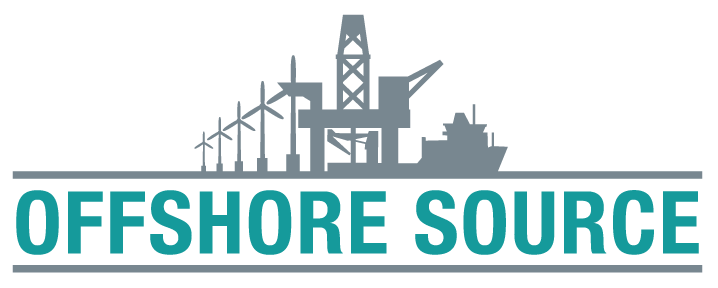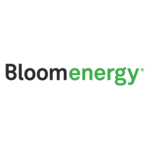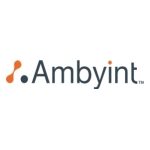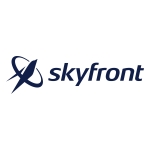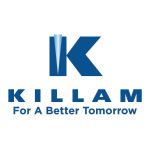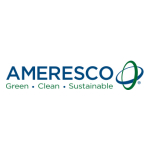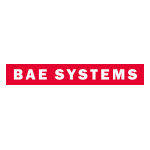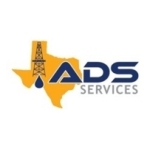~Greenlane continuing to demonstrate robust growth with record revenue up 30% and sales order backlog up over 350% over the same period last year~
VANCOUVER, British Columbia--(BUSINESS WIRE)--$GRN #RNG--Greenlane Renewables Inc. (“Greenlane” or the “Company”) (TSXV: GRN), today announced its interim financial results for the third quarter ended September 30, 2020. For further information on these results, please see Greenlane’s Condensed Consolidated Interim Financial Statements and Management Discussion and Analysis. All amounts are in Canadian dollars and in accordance with IFRS.
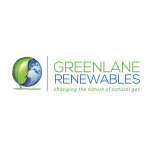
Third Quarter Highlights Include:
-
Record revenue of $6.5 million in the quarter ended September 30, 2020 representing a 30% year-over-year increase from $5.0 million reported in the third quarter 2019.
-
Gross margin of $1.7 million (26% of revenue), was 31% higher than the $1.3 million (26% of revenue) reported in the third quarter of 2019.
-
Sales order backlog (note one) of $43.8 million, an increase of over 350% from the $9.6 million reported as at September 30, 2019.
-
Sales pipeline (note two), valued at over $690 million as at September 30, 2020 versus $660 million as at September 30, 2019, reflects both the increase of more than $75 million in new opportunities and the movement of $48 million in signed contracts into the sales order backlog.
-
Net income of $0.7 million (or $0.01 per share) and Adjusted EBITDA loss of $0.2 million* in the three month period ended September 30, 2020, compared to a net loss of $1.8 million (or $0.04 per share) and Adjusted EBITDA loss of $0.9 million in the quarter ended September 30, 2019. The net income for the period ended September 30, 2020 includes a $1.8 million gain due to the reduction in the promissory note to Pressure Technologies plc (“PT”).
-
Cash and cash equivalents of $5.7 million as at September 30, 2020 compared with $2.3 million as at December 31, 2019.
-
Executed a Framework Agreement with PT which reduced the outstanding promissory note by $1.8 million down to $5.2 million upon PT’s disposition of its entire equity position in Greenlane.
-
Signed a $2.4 million system supply contract with Grupo Cocal, a Brazilian sugar mill operator, for the first commercial-scale pipeline injection RNG project in the Brazilian sugar cane industry. Delivery on this contract commenced immediately.
-
Subsequent to the quarter, signed a $7.7 million contract for a multiple-site dairy farm project in Florida developed by Brightmark LLC. The project is part of the recently announced joint venture between Brightmark and Chevron U.S.A. Inc., that will own projects across the United States to produce RNG from dairy farms. Delivery on this contract commenced immediately (note three).
“Our record revenue this quarter was the result of conversion of our rapidly growing sales order backlog into the revenue line through execution of our customer contracts,” said Brad Douville, President and CEO of Greenlane. “From Q1 2020, our quarterly revenues have ramped sequentially on average by 50%. This is consistent with the growth rate of our sales order backlog since Q3 of 2019. Sales order backlog growth precedes revenue growth.”
“Our sales pipeline, which feeds our sales order backlog, currently stands at over $690 million and continues to expand year-over-year, which provides more evidence of a growing global focus on the low-carbon energy transition. We’ve been able to achieve these milestones through the hard work of the Greenlane team and the support of our trusted supply chain partners around the world.”
“We continue to have success converting opportunities into contract wins, as our sales order backlog has grown. Our signed agreement with the SWEN Impact Fund for Transition announced during the quarter puts Greenlane in an enviable and unique position in the European market, and we remain optimistic on a strong finish to 2020 as we started off the fourth quarter with a new repeat-customer system supply contract for a Brightmark RNG project in Florida. Chevron’s joint venture with Brightmark further demonstrates the increasing pull by the oil majors to secure attractive RNG offtake in the market including making the necessary project investments. With visibility to more than 180 project opportunities globally, proposed or proceeding, Greenlane remains well positioned to capture a growing share of the RNG value chain as a leading technology and solutions provider.”
The Company’s revenues are largely derived from a relatively small number of large biogas upgrader orders accounted for on a stage of completion basis over typically a nine to eighteen-month period. Timing of new contract awards varies due to customer-related factors such as finalizing technical specifications and securing project funding, permits and RNG off-take and feedstock agreements. Some projects have built-in pause periods to allow customers to complete concurrent activities such as civil work. As a result, the Company’s revenue varies from month to month and quarter-to-quarter.
The Market Outlook
While uncertainty remains with respect to the COVID-19 pandemic and its ongoing impact on global economies, the energy transition is here to stay and will play a meaningful and growing part in countries’ efforts to stimulate their economies while tackling climate change and moving toward a decarbonized future.
The European Union recently released its Methane Strategy, which recognizes the pivotal role of biogas and biomethane in accelerating the reduction of methane emissions from agriculture in Europe and achieving climate-neutrality by 2050. Capturing the methane from agricultural waste, which it estimates is responsible for over half of methane emissions within the Union, not only will play a fundamental role in decarbonizing Europe but will also provide a boost to struggling rural development through the production of biogas and RNG.
Commercial vehicle fleets continue to announce the switch to RNG as an alternative to diesel fuel. According to NGV America and the Coalition for Renewable Natural Gas, in the United States and Canada there are 110 RNG production facilities in operation, 40 under construction and 58 in development and RNG use as a transportation fuel has grown at a 30% compound annual growth rate over the five year period from 2015 through 2019 to reach 39% of all on-road fuel used in natural gas vehicles.
Global oil and gas supermajors are rapidly moving to adopt decarbonization strategies and increase renewable and low carbon energy sources within their respective portfolios, including RNG. Earlier in 2020, Royal Dutch Shell, BP and Total all announced their respective net zero by 2050 ambitions. In July 2020, Shell entered into an agreement with Denmark’s Nature Energy to buy RNG, described as the largest deal of its kind, to provide a range of lower-carbon energy choices for its customers across Europe. In September 2020, BP provided a deep dive on its net zero by 2050 strategy to the investment community, which highlighted that BP is already one of the largest suppliers of RNG to the US transportation sector through its Mavrix joint venture with Aria Energy and supply agreement with Clean Energy Fuels Corp, and that in June 2020 Mavrix agreed to its first dairy manure development with three farms in the Central Valley of California. According to the European Biogas Association, in September 2020 Total S.A revealed a new global business unit dedicated to biogas and biomethane production. In July 2020, Chevron announced its Adopt-a-Port initiative, partnering with Clean Energy Fuels, that provides truck operators serving the ports of Los Angeles and Long Beach with clean, carbon-negative RNG. In October 2020, Chevron announced the formation of a joint venture with Brightmark LLC to own projects across the United States to produce RNG from dairy farms where Chevron will purchase the RNG from these projects and market the volumes for use in vehicles operating on compressed natural gas.
Conference Call
The public is invited to listen to the conference call in real time by telephone. To access the conference call by telephone, please dial: 1-800-319-4610 (Canada & USA toll-free) or 604-638-5340. Callers should dial in 5-10 minutes prior to the scheduled start time and ask to join the Greenlane Renewables conference call.
Shortly after the conference call, the replay will be archived on the Greenlane Renewables website and replay will be available in streaming audio and a downloadable MP3 file.
NON-IFRS FINANCIAL MEASURES
Management evaluates the Company’s performance using a variety of measures, including “Adjusted EBITDA” and “sales order backlog”. The non-IFRS measures should not be considered as an alternative to or more meaningful than revenue or net loss. These measures do not have a standardized meaning prescribed by IFRS and therefore they may not be comparable to similarly titled measures presented by other publicly traded companies and should not be construed as an alternative to other financial measures determined in accordance with IFRS. The Company believes these non-GAAP financial measures provide useful information to both management and investors in measuring the financial performance and financial condition of the Company. Management uses these and other non-IFRS financial measures to exclude the impact of certain expenses and income that must be recognized under IFRS when analyzing consolidated underlying operating performance, as the excluded items are not necessarily reflective of the Company’s underlying operating performance and make comparisons of underlying financial performance between periods difficult. From time to time, the Company may exclude additional items if it believes doing so would result in a more effective analysis of underlying operating performance. The exclusion of certain items does not imply that they are non-recurring.
*Reconciliation of net loss to Adjusted EBITDA loss
|
Three months ended
September 30, 2020
$’000s
|
|
Three months ended
September 30, 2019
$’000s
|
Net income (loss)
|
743
|
|
(1,750)
|
Add back:
|
|
|
|
Share based compensation
|
152
|
|
215
|
Depreciation and amortization
|
383
|
|
361
|
Finance expense
|
101
|
|
198
|
Gain on extinguishment of promissory note
|
(1,777)
|
|
-
|
Foreign exchange loss
|
199
|
|
15
|
Change in fair value of special warrants
|
-
|
|
(249)
|
Transaction costs
|
-
|
|
350
|
Adjusted EBITDA loss
|
(199)
|
|
(860)
|
Note one - Sales order backlog refers to the balance of unrecognized revenue from contracted projects, where such revenue is recognized over time as completion of projects progress.
Note two - Greenlane maintains a sales pipeline of prospective projects that it updates regularly based on quote activity to ensure that it is reflective of sales opportunities that can convert into orders within approximately a rolling 24 month time horizon. Not all of these potential projects will proceed or proceed within the expected timeframe and not all of the projects that do proceed will be awarded to Greenlane. Additions to the amount in the sales pipeline come from situations where the Company provides a quote on a prospective project and reductions to the sales pipeline arise when the Company loses a prospective project to a competitor, a project does not proceed or, where a quote in the pipeline is converted to Greenlane’s sales order backlog.
Note three - The sales order backlog of $43.8 million disclosed for the quarter ended September 30, 2020 includes the $7.7 million Brightmark contract announced in early October.
All filings related to the third quarter ended September 30, 2020 are available on SEDAR at www.sedar.com.
About Greenlane Renewables
Greenlane is cleaning up two of the largest and most difficult-to-decarbonize sectors of the global energy system: the natural gas grid and the transportation sector. As a leading global provider of biogas upgrading systems, Greenlane’s solutions create clean, low-carbon renewable natural gas (RNG), suitable for injection into the natural gas grid and for direct use as vehicle fuel. Our systems, marketed and sold under the Greenlane Biogas™ brand, remove impurities and separate carbon dioxide from biomethane in the raw biogas created from organic waste at landfills, wastewater treatment plants, farms and food waste facilities. With multiple core technologies, more than 110 systems deployed in 18 countries and counting, and 30+ years’ experience, Greenlane finds the right solution, whatever the specific project requirements. Whether we’re working with waste producers, gas utilities, or project developers, we’re doing more with biogas, helping to turn a low-value product into a high-value renewable resource. For further information, please visit www.greenlanerenewables.com.
FORWARD-LOOKING INFORMATION – This news release contains “forward-looking information” within the meaning of applicable securities laws. All statements contained herein that are not historical in nature contain forward-looking information. Forward-looking information can be identified by words or phrases such as “may”, “expect”, “likely”, “should”, “would”, “plan”, “anticipate”, “intend”, “potential”, “proposed”, “estimate”, “believe” or the negative of these terms, or other similar words, expressions and grammatical variations thereof, or statements that certain events or conditions "may" or "will" happen. The forward-looking information contained in this press release, includes, but is not limited to, Greenlane’s position within the European market, Greenlane’s expected financial performance for 2020, Greenlane’s role in countries’ efforts to stimulate their economies while tackling climate change and moving toward a decarbonized future, Greenlane’s market outlook including capturing methane from agricultural waste playing a fundamental role in decarbonizing Europe and improving rural development through biogas and RNG production, the amount invested in increasing California state RNG supply and the timing of RNG production facilities becoming operational, Greenlane’s position to capture a growing share of the RNG value chain as leading industry provider of biogas upgrading and project development solutions and Greenlane’s order backlog and sales pipeline. The forward-looking information contained herein is made as of the date of this press release and is based on assumptions management believed to be reasonable at the time such statements were made, including management's perceptions of future growth, results of operations, operational matters, historical trends, current conditions and expected future developments, as well as other considerations that are believed to be appropriate in the circumstances. While we consider these assumptions to be reasonable based on information currently available to management, there is no assurance that such expectations will prove to be correct. By their nature, forward-looking information is subject to inherent risks and uncertainties that may be general or specific and which give rise to the possibility that expectations, forecasts, predictions, projections or conclusions will not prove to be accurate, that assumptions may not be correct and that objectives, strategic goals and priorities will not be achieved. A variety of factors, including known and unknown risks, many of which are beyond our control, could cause actual results to differ materially from the forward-looking information in this press release. Such factors include, without limitation: risks relating to Greenlane’s expected position within the European market, Greenlane’s financial performance of 2020, Greenlane having a role in economies working towards combating climate change, Greenlane’s market outlook, Greenlane’s market share of the RNG value chain, Greenlane as a leading biogas upgrading and project development solutions provider, Greenlane’s order backlog being recognized in revenue and Greenlane’s sales pipeline resulting in orders. Additional risk factors can also be found in the Company's Annual Information Form, which has been filed under the Company's SEDAR profile at www.sedar.com. Readers are cautioned not to put undue reliance on forward-looking information. The Company undertakes no obligation to update or revise any forward-looking information, whether as a result of new information, future events or otherwise, except as required by applicable law. Forward-looking statements contained in this news release are expressly qualified by this cautionary statement.
FINANCIAL OUTLOOK INFORMATION – This news release contains “financial outlook information” regarding Greenlane’s prospective revenue and results, which is subject to the same assumptions, risk factors, limitations, and qualifications as set forth in the above. Revenue and other estimates contained in this news release were made by Greenlane management as of the date of this news release and are provided for the purpose of describing anticipated changes, and are not an estimate of profitability or any other measure of financial performance. Investors are cautioned that the financial outlook information contained in this news release should not be used for purposes other than for which it is disclosed herein. THE COMPANY QUALIFIES ALL THE FORWARD LOOKING STATEMENTS AND FINANCIAL OUTLOOK INFORMATION CONTAINED IN THIS NEWS RELEASE BY THE FOREGOING CAUTIONARY STATEMENTS.
Neither the TSX Venture Exchange nor its Regulation Services Provider (as that term is defined in the policies of the TSX Venture Exchange) accepts responsibility for the adequacy or accuracy of this release or has in any way approved or disapproved of the contents of this news release.

Contacts
Incite Capital Markets
Eric Negraeff / Darren Seed
Greenlane Renewables Inc.
Brad Douville, President & CEO,
Ph: 604.493.2004
Email: This email address is being protected from spambots. You need JavaScript enabled to view it.
